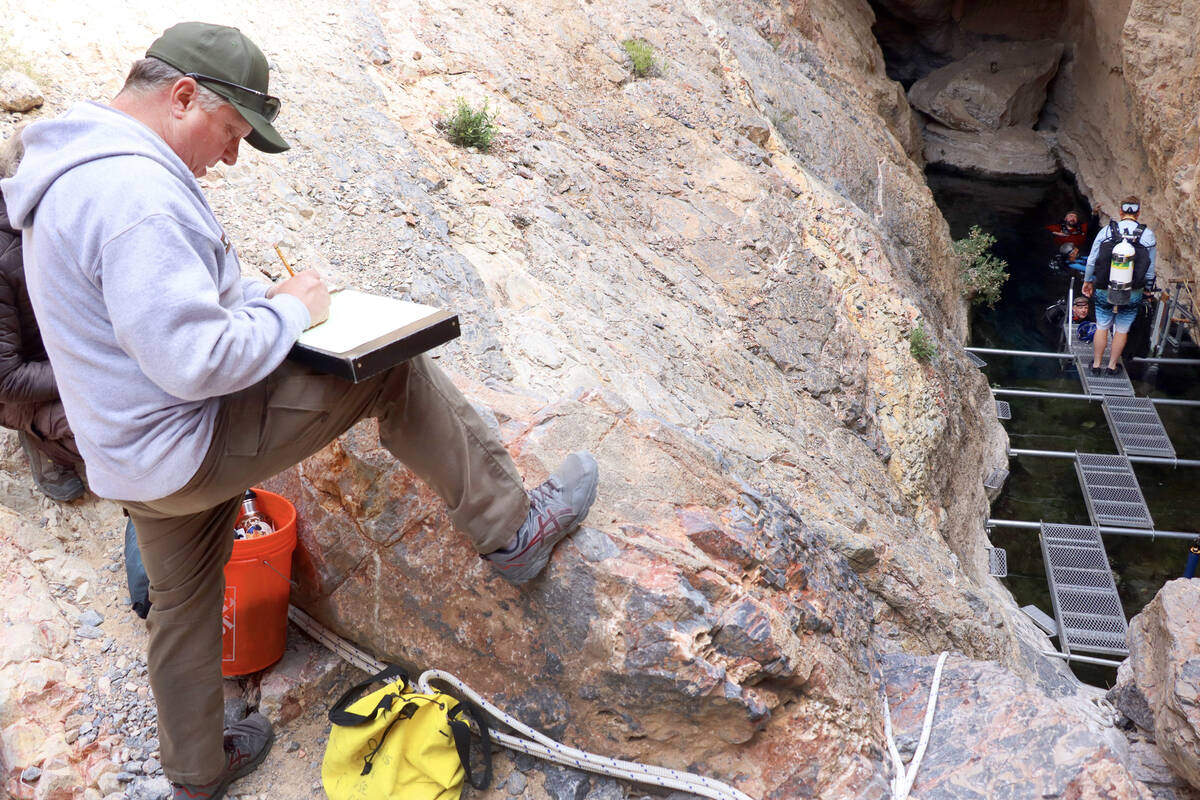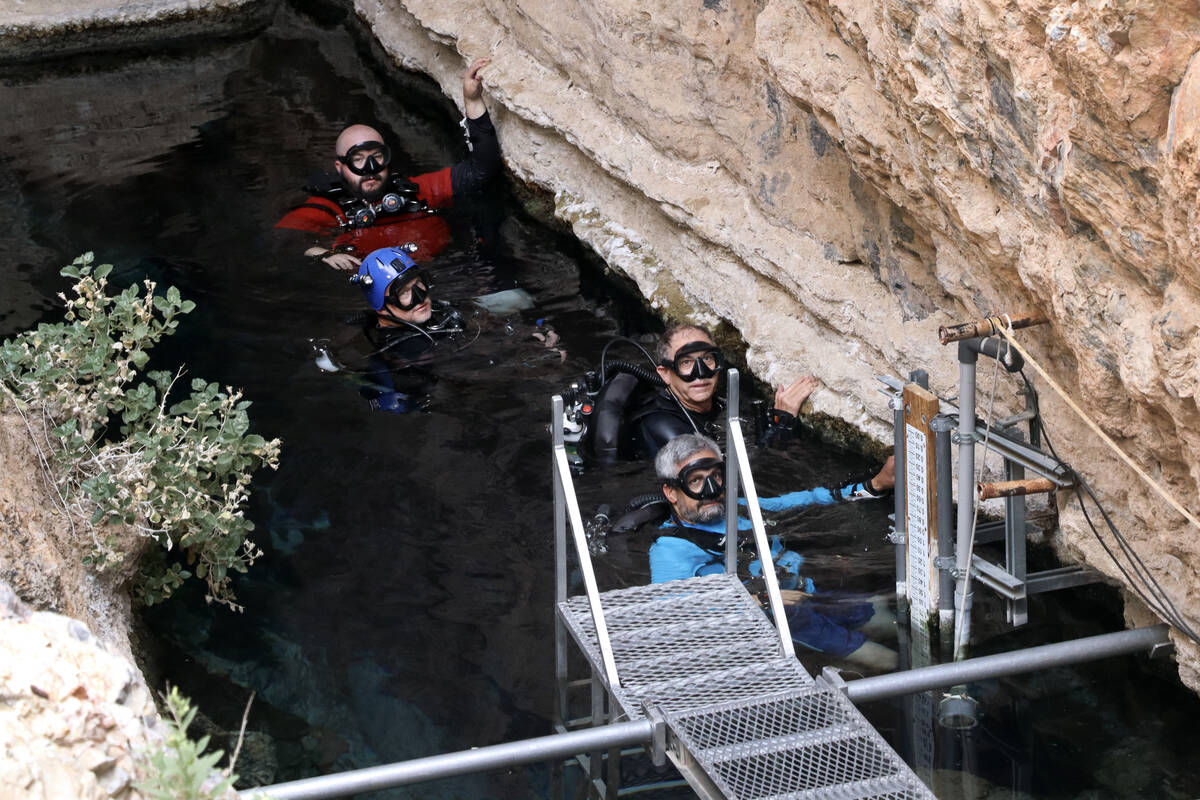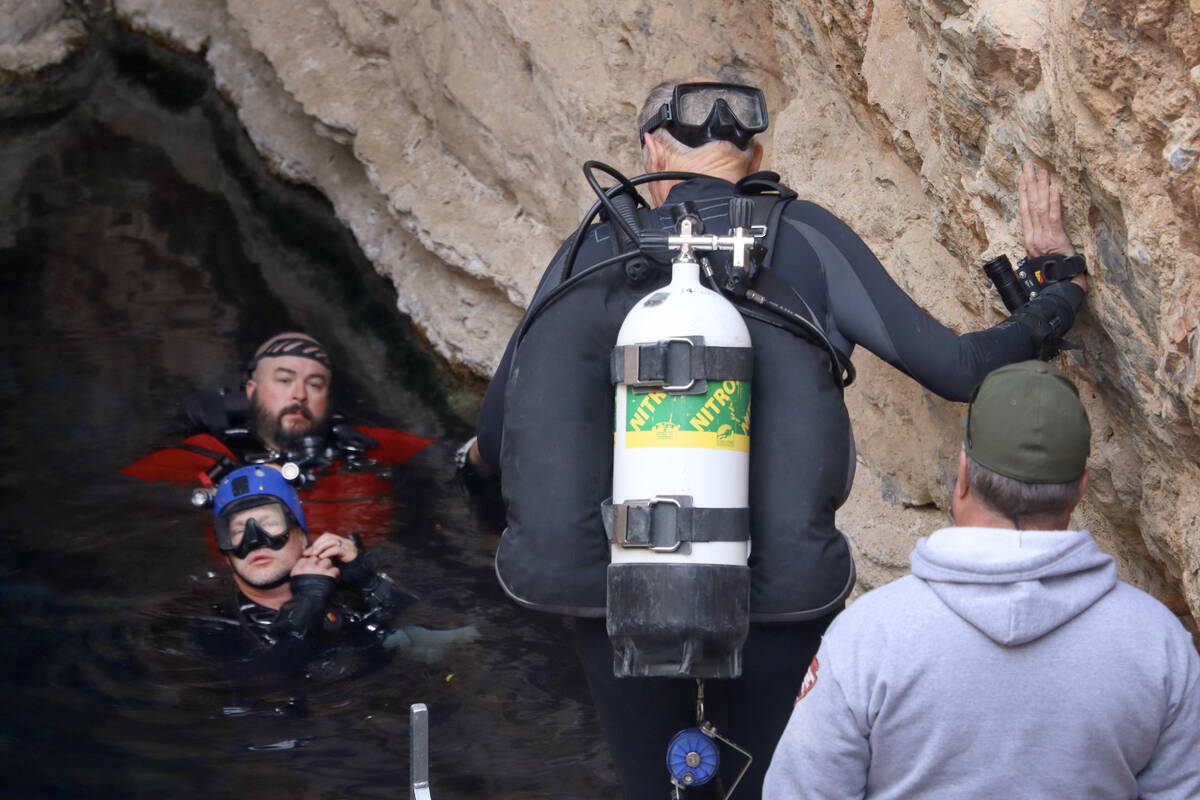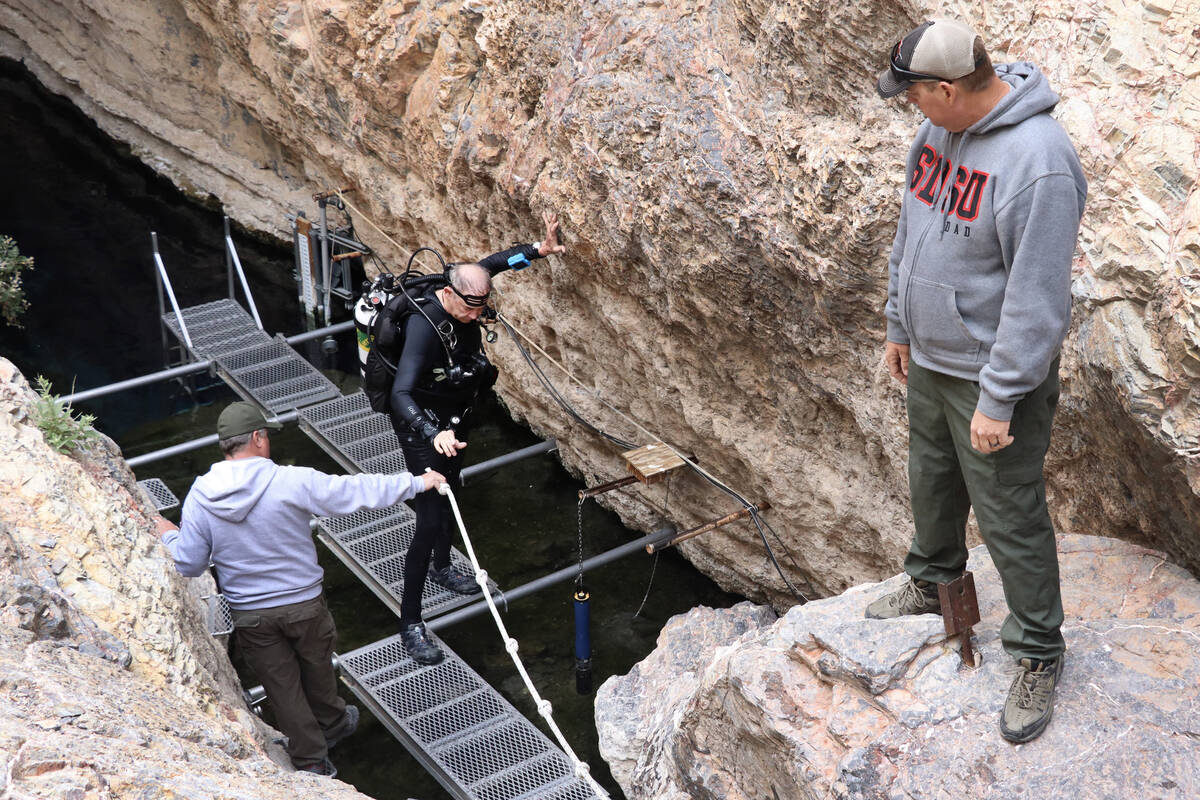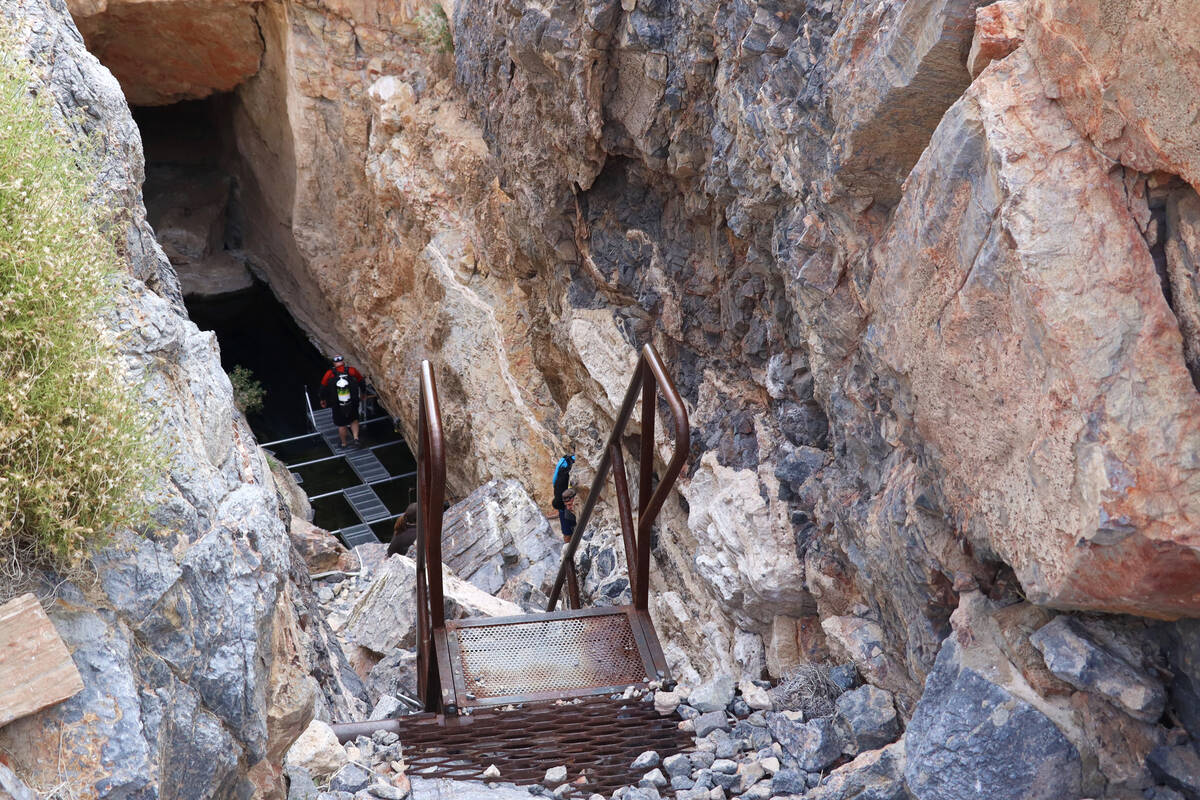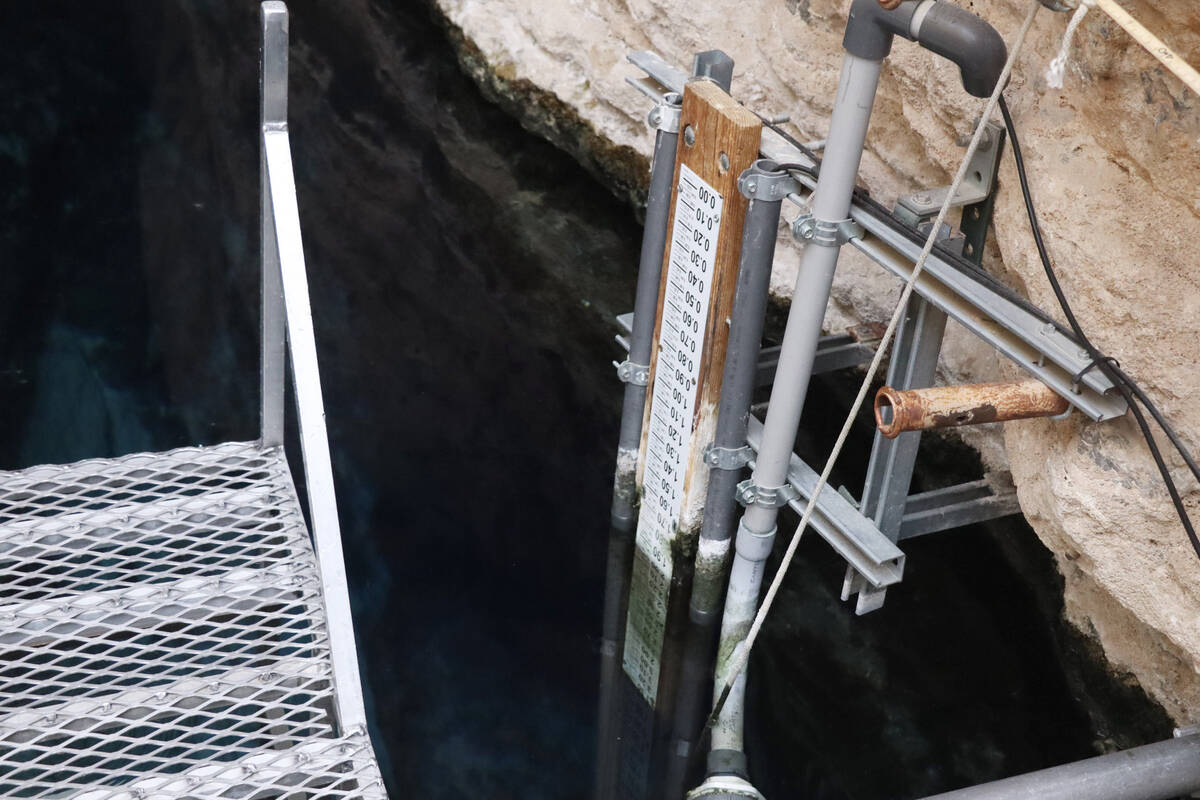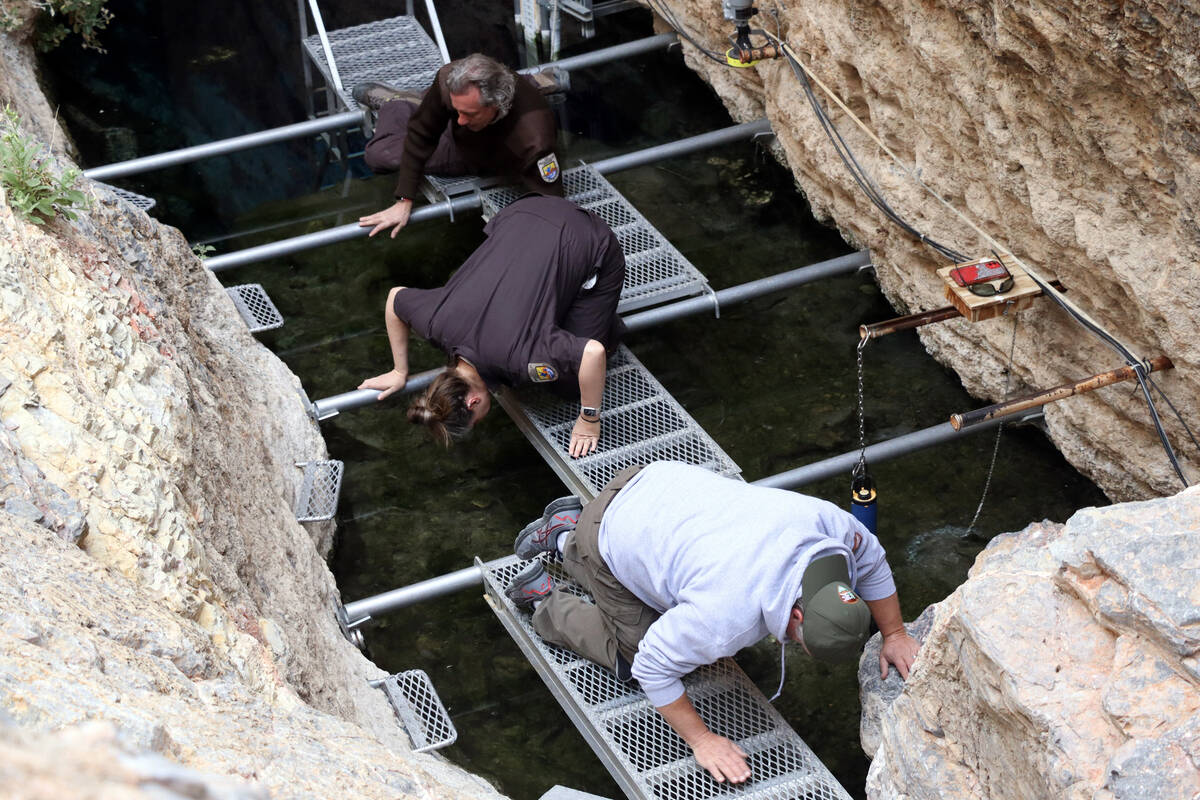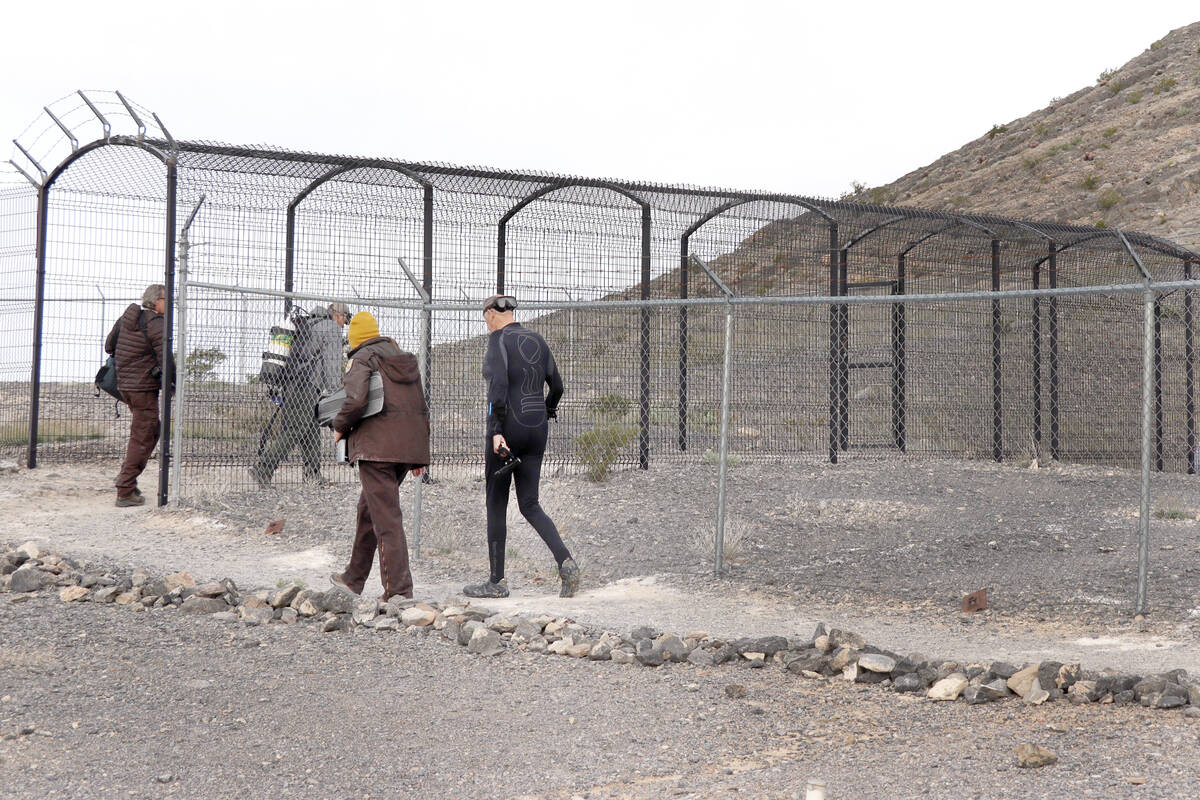Divers tally Devils Hole pupfish, the rarest fish in the world
AMARGOSA VALLEY — Once the divers suit up and turn on the oxygen tanks on their backs, the mission is clear: Count as many little blue fish as possible, and don’t count any of them twice.
The aquatic marvel in question is the Devils Hole pupfish. The species lives nowhere in the world but inside a secluded cave, the depth of which is unknown, in a section of Ash Meadows National Wildlife Refuge that’s considered a part of Death Valley National Park.
Aside from two “safety divers” who are underwater in case of an emergency, diver one and diver two have distinct routes about 100 feet deep that they carefully follow in the crystal blue water warmer than a hot tub. Inside a spring that’s normally caged off to the public, they must be quick, but calculated, so as not to disturb the fish’s fragile home.
“You’re in complete darkness and can’t see your hands in front of you,” said National Park Service biologist Jeffrey Goldstein after completing all five dives last weekend. “Then you have these fish that are popping out of little hiding spots between the rocks.”
The pupfish truly are puppylike, Goldstein said, squabbling with one another and chasing other fish around.
Above ground, three other fish biologists tally the fish on the surface, hunching over metal platforms and calling out numbers to another scientist who records them to factor in to the final count.
Twice a year, this tight-knit group of scientists and volunteers from the National Park Service, U.S. Fish and Wildlife Service and Nevada Department of Wildlife come together to see how the Devils Hole pupfish fared that season. It’s a labor-intensive process — a vital one that keeps a pulse on the rarest fish in the world.
Numbers dip, hopes high
The total count of pupfish in the wild calculated on April 8 is down from last fall’s 19-year high of 263.
Estimates from last weekend, calculated from the first dive of each day and surface counts, place the fish’s wild population at 191, a decrease that may fall within a margin of error.
That’s not necessarily bad news. Kevin Wilson, who supervises the count every year for the National Park Service, said small fish of 10 to 15 millimeters made up at least a quarter of the population.
He said efforts to encourage the fish to reproduce, like periodically inserting food into the water, are working, and recently spawned fish are staying alive. Current numbers are still a marked improvement from the spring of 2013, when 35 pupfish were left in the wild at Devils Hole.
“We’ve put time and thought into taking the best available science to help us to deal with the changing, dynamic population,” Wilson said.
Though the fish is only about an inch long on average, it’s made a lot of noise in the conservation community throughout the years. It was one of the first species to be listed under the Endangered Species Act in 1967, and the fight to save water levels from the overpumping of groundwater made its way up to the U.S. Supreme Court.
Today, a gauge monitors the water level to make sure it doesn’t dip too low. The fish soon became a symbol of how water transformed into a limiting factor of growth in Nevada and the West.
“Society needs to make a decision about what’s worth protecting,” Wilson said.
Lab-grown pupfish on rise
A few miles away from the fish’s natural habitat, Olin Feuerbacher manages an artificial one with more than 400 fish as of the latest fall count.
In a 100,000-gallon tank, fish biologists have replicated the species’ ecosystem and allow them to live as they would in Devils Hole. This was done by taking 3-D scans of the cave’s levels and carving it out of plastic foam.
They don’t plan on releasing them back into the wild, but maintaining a diverse genetic pool is important to preserving the species long term, Feuerbacher said.
“We’re trying to answer questions before they actually have to be answered,” he said. “What do we do now that there’s already bottlenecked genetic diversity?”
Seeing a return on investment over the years is gratifying for many of the biologists who have kept a watchful eye on the species.
“It makes it feel like what we’re doing is working to some degree,” said Ambre Chaudoin, a Fish and Wildlife Service biologist who has helped with the count for almost a decade. “But they’re not out of danger. We almost saw them blink out and go extinct.”
Contact Alan Halaly at ahalaly@reviewjournal.com. Follow @AlanHalaly on X.



